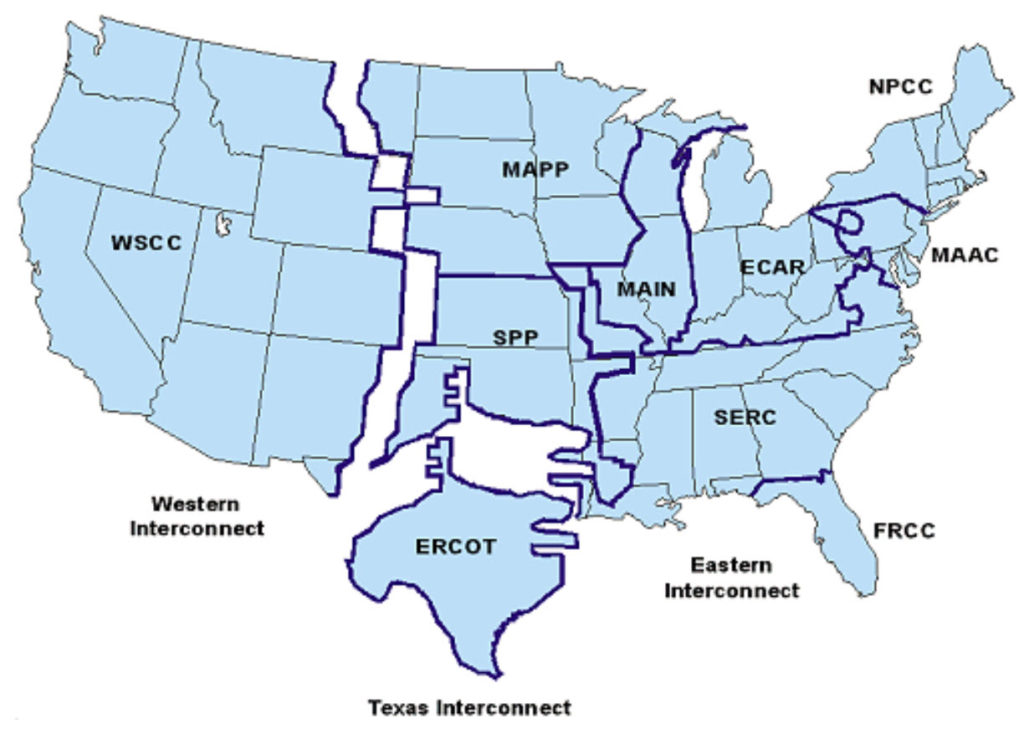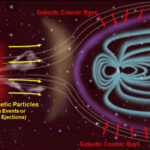In 2006, the creators of the TV series Jericho imagined how nuclear detonation would affect a small Kansas town. Large solar-based EMPs have been documented. In 1859, a solar storm dubbed the Carrington Event hit the Earth’s magnetosphere. One of the largest solar storms on record, the CME in 1859 caused telegraph equipment to spark and an aurora borealis bright enough for people to read a newspaper outside at night. According to Robert M. Schoch, in Forgotten Civilization: The Role of Solar Outbursts in Our Past and Future, “the all-important transformers along gridlines could heat up and melt, causing massive blackouts. This famously happened in Canada’s Québec province, when on March 13, 1989, a solar storm disrupted Hydro – Québec transmission lines and in less than two minutes a blackout occurred, affecting 6 million people for 9 to 12 hours (Berge 2011). In this particular case, a billion-ton cloud of gas and plasma was released from the sun, with the energy of thousands of nuclear bombs exploding simultaneously, and headed toward Earth at a speed of approximately 1.6 million kilometers an hour (Odenwald 2009). Besides the Québec blackout, due to the solar flare accompanying the March 1989 solar storm (which was nowhere near the size of the Carrington Event), shortwave radio signals were disrupted…. And there were still more direct consequences, as reported by Sten Odenwald: ‘in space, some satellites actually tumbled out of control for several hours. NASA’s TDRS-1 communications satellite recorded over 250 anomalies as high-energy particles invaded the satellites sensitive electronics.’”
A similar note was sounded by William G. Duff, PhD., whose 53-year career centered on surmounting electromagnetic compatibility issues for computer and communications systems. During an interview for the IEEE History Center in 2012, Duff, a past president of the EMC Society, explained, “If you have an explosion, [a] high altitude nuclear explosion over the center of the US, it will wipe out all the electronic equipment that’s not protected over the whole US. There’s a lot of interest in that problem now. We’re so dependent on grids. We’ve got communication grids. We’ve got power grids. And all of them are potentially susceptible to EMI problems.”[i]

In December 2013 the Defense Threat Reduction Agency (DTRA), asked solutions providers to come forward if they were interested in the opportunity to further the knowledge of “high altitude weapons electromagnetic pulse effects modeling.”[ii] However, in noting the DTRA’s action, Robert Heckhusen, in an article published first on medium.com and then in Foreign Policy, calls “the risk that a rogue state could emit a blast of electromagnetic energy” an “overblown theory,”[iii] at the same time acknowledging that EMP from a powerful solar storm could mean “lights out.” Despite the skepticism by some, DTRA has continued to address the issue. For example, by 2016, the agency had sent out a Request for Proposal (RFP) for participation in a “commercial R&D program to create EMP protected microgrids for critical infrastructure needed both on and off military bases and other defense critical infrastructure.”[iv]
By June of 2017 the Commission to Assess the Threat to the United States from Electromagnetic Pulse (EMP) Attack had completed gathering information and in April of 2018 made the report available to the public (PDF, 2MB). The commission warned, “Within the last decade, newly-armed adversaries, including North Korea, have been developing the ability and threatening to carry out an EMP attack against the United States.”[v] The same report also noted that “Solar superstorms can generate natural EMP over remarkably wide areas.”
Options
You can shield electronics from EM radiation with a Faraday bag, which is a Faraday cage made of flexible fabric made of woven metallic thread. The military has ruggedized laptops for the battlefield. You can cage equipment to protect it (see Figure 2). The EMP Commission report makes “preppers” look wise, with the grim observation that ”a long-term outage owing to EMP could disable most critical supply chains, leaving the US population living in conditions similar to centuries past, before the advent of electric power. In the 1800s, the US population was less than 60 million, and those people had many skills and assets necessary for survival without today’s infrastructure. An extended blackout today could result in the death of a large fraction of the American people through the effects of societal collapse, disease, and starvation. While national planning and preparation for such events could help mitigate the damage, few such actions are currently underway or even being contemplated.”[vi]
It’s not clear if such a powerful electromagnetic pulse will take place naturally or otherwise. A mild hit would destroy some, but not all exposed electronics and electrical systems. The cost to harden all power grids against such an event is so high that none are willing to do more than keep a few replacement parts on hand. However, looking at the research commissioned by the government, it’s clear that a large enough hit (natural or otherwise) could wipe out many power grids at once, cripple cars, and destroy exposed (and operating) electronics. Some present-day equipment is life-sustaining. For example, without refrigeration, insulin for diabetics would deteriorate after 28 days, as stored insulin must be refrigerated.

Being without power for a long time exposes the potential frailty of a modern, technically intricate society. A few years back, a friend of mine had no power for an entire week due to a severe snow storm. He couldn’t drive because the car was under several feet of snow. The contents of the refrigerator and freezer were put outside, showers were ice cold, and they heated the house with the fireplace while scavenging every blanket they owned. Cell phones were impossible to charge, and the usual modes of entertainment were dead. He admitted that the situation was annoying at first, then became frustrating. The grocery store within walking distance would only take cash, as all the credit card machines were down and they had none of those little carbon copy slips left over from the ‘80s. Without power, ATMs were inoperable and traffic signals dead. His family survived the technologically primitive week and truly appreciated the recovery of their accustomed standard of living. However, compared to a bad storm that left a city without power for a week, an EMP attack could destroy equipment that takes weeks or months to repair.
Living with electricity has become a fundamental part of life as agriculture, banking, and transportation are entwined with layers of embedded technology, including the internet. The internet is near the top of the technology stack, above computers and electricity. If a large region were bespeckled with electrical damage from a solar storm, neighboring regions with less damage would also be affected (because we are interconnected) and respond. Extensive electrical damage would mean longer term hardship than a storm for many, however, and change the standard of living for a multitude, not just the ones who are directly hit. For centuries, humanity has demonstrated that no man is an island. Modern technology has interconnected us all, and continues to connect us to an increasingly greater extent as technology continues to build upon itself.
References
[i] https://ethw.org/Oral-History:William_G._Duff
[ii] https://www.fbo.gov/index?s=opportunity&mode=form&id=b91c8673d13b567f3f5da4c41628db4f&tab=core&_cview=0
[iii] https://medium.com/war-is-boring/bzzt-military-wants-to-protect-satellites-from-emp-weapons-fde1f86d14bc ; https://foreignpolicy.com/2014/01/03/military-looks-to-shield-its-satellites-from-electromagnetic-attacks/
[iv] http://www.stop-emp.com/Final-DTRA-IAN-Press-Release%20-w-logos-centered.pdf
[v] www.firstempcommission.org/uploads/1/1/9/5/119571849/executive_report_on_assessing_the_threat_from_emp_-_final_april2018.pdf
[vi] Ibid.




The simulated Laser plasma Earth Shield that CAN REPEL space threats (such as Apophis asteroid) and AVERT the RISING BLACKOUTS (as 2017’s in 15 US cities) & all nuclear plants’ explosion by the next solar superstorm, as we thankfully escaped in 1989, 2003, 2012* & 2017
https://astronomy.fas.harvard.edu/news/impact-and-mitigation-strategy-future-solar-flares
*
http://science.nasa.gov/science-news/science-at-nasa/2014/23jul_superstorm
http://www.swpc.noaa.gov/sites/default/files/images/u33/final_shibata_SWW_2015.pdf
9 MONTHS BLACKOUT!!!… THANKFULLY their nuclear plant was decommissioned in 1970. Even US STATE channel PBS ALERTS: https://www.youtube.com/watch?v=Km2m4H2TdoY
Simulated laser plasma shield: https://phys.org/news/2017-07-scientists-laboratory-astrophysical.html : Princeton, RochesterΝΥ, Michigan, New Hampshire.
https://thewire.in/159826/tifr-tabletop-laser-plasma-omega-parker-aditya
30 super lasers ALREADY EXIST!
https://www.cambridge.org/core/journals/high-power-laser-science-and-engineering/article/petawatt-class-lasers-worldwide/77B55882D24E72D26E233B691A8376D2